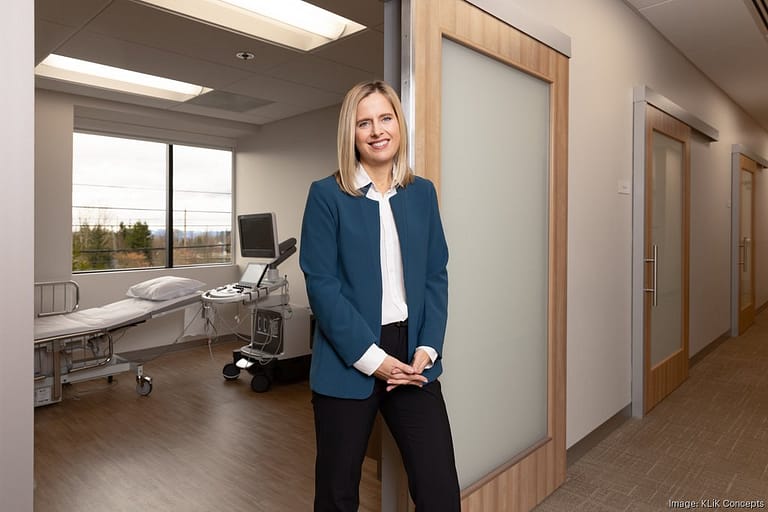Reeling from a second year of losses, hospitals stress the need for policy changes
Oregon's hospitals posted a negative median operating margin for the second year in a row in 2023, raising questions about long-term sustainability.
Read more about the work the hospital association is doing on behalf of Oregon’s hospitals.
Oregon's hospitals posted a negative median operating margin for the second year in a row in 2023, raising questions about long-term sustainability.
The hospital association board of trustees has elected Samaritan CEO Doug Boysen as chair. Boysen's two-year term began Jan. 1.
Two of Oregon's outstanding hospital leaders have joined the association board for a two-year term.
Hospitals are experiencing the increasing pressure of an inflationary environment. Their operating expenses continued to rise in the second quarter, with employee costs (which make up half of total operating expenses) increasing 31% from the second quarter of 2020. Spending on supplies has also increased sharply, by 52%.
In a show of strong bipartisan support, the Oregon Senate passed House Bill 2697, a groundbreaking piece of legislation that will make significant advances in hospital staffing and patient care.
Despite the financial havoc wrought by the COVID-19 pandemic, including sharply rising costs and stagnant revenue, Oregon hospitals’ total community benefit spending grew by $225 million in 2021 to $1.97 billion.

In a series of regular columns, Hospital Association of Oregon President and CEO Becky Hultberg shares her view on how Oregon hospitals are making a difference in the communities they serve.
If we want strong, stable hospitals that provide access to care, we must tackle the underlying issues causing financial instability for hospitals.
If we want to ensure dependable access to services in our communities--and have a robust and resilient workforce--we need to make investments and policy decisions that will help hospitals be financially and operationally viable. The stability of our hospitals must be a priority this session and beyond.
We are grateful for the trust Oregon’s hospitals have built over the years, and we hope to use that trust as a foundation to innovate and improve our health care system, putting our patients and communities at the center of all we do.
For more than 90 years, the Hospital Association of Oregon has been the voice for our state’s community hospitals. But a lot has changed during that time, and it is time for us to change, too.
When it comes to their health, Oregonians trust the teams of professionals who care for them because they have confidence that those teams can work together to navigate a constantly changing environment.
With hospitals still reeling from the pandemic and economic headwinds like inflation adding to their strain, we set ambitious public policy goals to ensure Oregonians would have access to the care they deserve now and into the future.
I’ve always found inspiration in the stories of people drawn to do the difficult work of health care. My own journey, while circuitous, was shaped by important events in my life.
For more than a century, Oregon’s not-for-profit hospitals have worked hard to keep our communities healthy.
Using the data provided by our affiliate organization, Apprise Health Insights, the Hospital Association of Oregon continues to produce valuable reports highlighting the financial health of Oregon’s hospitals as well as health care workforce and patient care trends.
In the 82nd Oregon Legislature, the hospital association worked to advance policies that address hospitals' current and long-term needs to sustain a health care system that generations of Oregonians can rely on.
Analysis of the utilization and financial data submitted by Oregon's hospitals and a forward look into current trends.
Analysis of the utilization and financial data submitted by Oregon's hospitals and a forward look into current trends.
Oregon’s nonprofit hospitals and health systems are driven by a mission to provide high-quality health care, no matter patients’ ability to pay.
Analysis of the utilization and financial data submitted by Oregon's hospitals and a look into year-end and current trends.
This report aims to provide a quarterly analysis of the utilization and financial data submitted by Oregon’s hospitals.

The Oregon Hospital Political Action Committee (OHPAC) is the political voice for Oregon hospitals and health systems. OHPAC works to elect officials and help candidates understand the importance of strong community hospitals and health systems in Oregon.
OHPAC was founded in 1982 as a non-profit, non-partisan, voluntary membership-based organization that supports political candidates and elected officials who understand the importance of maintaining strong, community-based hospitals in Oregon.
OHPAC seeks to create a shared recognition in Salem and Washington, D.C. of the dual roles played by Oregon hospitals as community health advocates and as essential employers within those communities. OHPAC members provide grassroots and financial support to legislative candidates and office holders who demonstrate a commitment to Oregon’s community hospitals.
4000 Kruse Way Place
Building 2, Suite 100
Lake Oswego, Oregon, 97035
503.636.2204
info@oregonhospitals.org
© 2024 Hospital Association of Oregon. All Rights Reserved.
According to the Occupational Health and Safety Administration, two of the leading causes of health care worker injuries are manual patient lifting and workplace violence. Musculoskeletal disorder injuries are generally due to overexertion related to repeated manual patient handling activities, often involving heavy manual lifting associated with transferring and repositioning patients and working in extremely awkward postures. The consequences of work-related musculoskeletal injuries among health care workers are substantial both to the workers themselves and to employers.
Meanwhile, health care and social assistance workers are nearly five times more likely to be injured and require time away from work as a result of workplace violence. Oregon’s hospitals are committed to a culture of safety and believe in a doctrine of zero tolerance toward violence.
To help address these issues, the Hospital Association of Oregon convened the Workplace Safety Initiative (WSI) Work Group in 2014 to find ways to collaboratively work on solutions. Work group members included representatives from SEIU Local 49, the Oregon Nurses Association, and representatives from various member hospitals in Oregon. Lynda Enos, RN, BSN, MS, COHN-S, CPE, Ergonomics/Human Factors Consultant, HumanFit, LLC was the consultant working directly with the pilot hospitals, including writing the WPV toolkit and the SPH tools.
The goals of the WSI project are:
To reach these goals, the group developed a pilot project working with Oregon hospitals. Volunteer hospitals of varying sizes from across the state participated in the safe patient handling project or the Workplace Violence Prevention project. The work with these pilot hospitals directly informed the materials provided below.